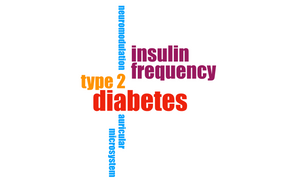Beyond the current standard of care approach for managing Type 2 diabetes (incl. healthy eating, regular exercise, weight loss, diabetes medication, insulin therapy, and blood sugar monitoring),[1] research into neuro-functional treatments is proving promise for treatment. An ever deeper understand of neuroscience is highlighting opportunities in diabetes care — being advanced by both the biomedical device industry,[2] as well as renewed interest in the neurological- and meridian-based acutherapies of the acupuncture field. And, more specifically, approaches in neuro-auricular modulation, such as Auricular Medicine.[3-5] The multi-modal treatments of Auricular Medicine can be applied across numerous healthcare settings (from the nurse practitioner or acupuncturist with auricular needles, to the therapist with transcutaneous electrical stimulation, to the clinician with low-level laser).
With the dawning of laser- and frequency-based therapies, clinical observations have shown that laser treatments using an insulin frequency have reduced blood sugar levels in patients with type 2 diabetes.[5] Such laser treatments, practiced in the field of Auricular Medicine — a medical approach that uses the auricular microsystem to assess and regulate neural disturbances related to any number of physical and psychological conditions — have been applied in different ways to improve the health outcomes of many other conditions.[6-9] With the ability of Auricular Medicine to resolve therapy resistance, by addressing blocked pathways (both neural pathways and meridians, e.g. pathways of functional energy[7]), the use of an insulin frequency and neuro-auricular modulation may offer treatment effects that go much deeper than simply managing blood sugar. Auricular Medicine may offer the promise for healing of the diabetic condition.
In an effort to pursue the promise of neuro-auricular treatment for Type 2 diabetes, the Canadian Institute of Auricular Medicine (CIAM) has collaborated with Dr. Andreas Wirz-Ridolfi, MD, Surgeon FMH, to develop specific training based on methods from Dr. Wirz’s pilot study using the insulin frequency. These training methods are intended to support implementation of methods to help improve patient outcomes and further clinical observations and multi-clinic studies.
For further information, please contact CIAM







Comments